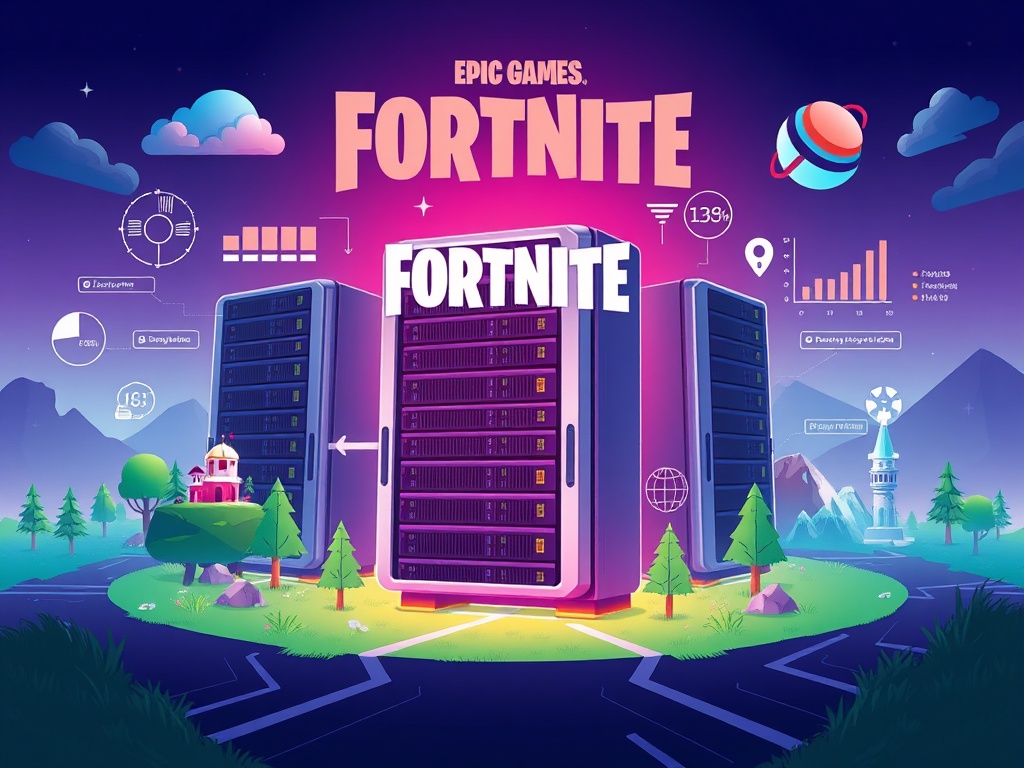Epic Games Fortnite Servers: A Deep Dive into Performance and Stability
Fortnite, developed by Epic Games, has taken the gaming world by storm since its release in 2017. As a battle royale game that combines elements of building, shooting, and survival, its success can be attributed not only to its engaging gameplay but also to the robust infrastructure supporting it. Central to this infrastructure are the Fortnite servers, which play a crucial role in ensuring performance and stability for millions of players worldwide. In this article, we will explore how Epic Games manages its servers, the challenges they face, and the innovations that contribute to an exceptional gaming experience.
The Architecture of Fortnite Servers
Epic Games employs a sophisticated server architecture to handle the massive influx of players. The game utilizes a combination of dedicated servers and cloud-based solutions, allowing for flexibility and scalability. The dedicated servers provide a stable environment for gameplay, while cloud services help manage fluctuations in player counts, especially during peak times or special events.
The server architecture is designed to minimize latency and provide quick response times. This is particularly important in a fast-paced game like Fortnite, where split-second decisions can determine victory or defeat. By strategically placing servers in various regions around the globe, Epic Games ensures that players can connect to a server closest to their location, reducing lag and improving overall performance.
Performance Metrics
To maintain a high level of performance, Epic Games continuously monitors various metrics related to server health and player experience. Key performance indicators (KPIs) include server uptime, latency, packet loss, and player counts. By analyzing these metrics, the company can identify potential issues before they escalate into larger problems.
Epic Games also conducts regular stress tests to simulate peak player loads. These tests help the team understand how their infrastructure behaves under pressure and allow them to make necessary adjustments. The goal is to ensure that players experience minimal disruptions during gameplay, even when the number of concurrent users reaches unprecedented levels.
Stability Challenges
Despite their best efforts, maintaining stability across Fortnite’s servers is no small feat. Various factors can lead to server instability, including DDoS attacks, software bugs, and hardware failures. Epic Games has implemented robust security measures to protect against DDoS attacks, which have become increasingly common in the gaming industry.
Moreover, software updates and patches can sometimes introduce unforeseen issues. Epic Games adopts a proactive approach by thoroughly testing updates in controlled environments before deploying them to live servers. This helps mitigate the risk of introducing new bugs that could disrupt gameplay.
Player Feedback and Community Engagement
Epic Games places significant emphasis on player feedback when it comes to server performance. The company actively engages with its community through forums, social media platforms, and in-game reporting systems. Players can report issues they encounter, such as lag spikes or disconnections, which allows the development team to investigate and address concerns swiftly.
This open line of communication fosters a sense of trust between the developers and the player base. It also enables Epic Games to prioritize improvements based on real-time feedback from players who are directly experiencing the game’s performance.
Innovations in Server Technology
To stay ahead in the competitive gaming landscape, Epic Games continually invests in innovative technologies that enhance server performance. One such innovation is the use of edge computing, which allows data processing to occur closer to the player rather than relying solely on centralized servers. This can significantly reduce latency and improve response times.
Additionally, Epic Games has been exploring the use of artificial intelligence (AI) to optimize server load balancing and resource allocation. AI-driven solutions can analyze player behavior patterns and dynamically adjust server resources accordingly, ensuring a smoother experience for everyone.
Conclusion
The success of Fortnite is not solely due to its captivating gameplay but also the robust server infrastructure that supports it. Epic Games has demonstrated a commitment to maintaining high performance and stability through careful planning, continuous monitoring, and community engagement. As technology evolves, the company remains poised to adapt and innovate, ensuring that Fortnite continues to deliver an exceptional gaming experience for players around the globe. With a focus on performance metrics, stability challenges, and cutting-edge innovations, Epic Games sets a standard for what players can expect from online multiplayer experiences.



